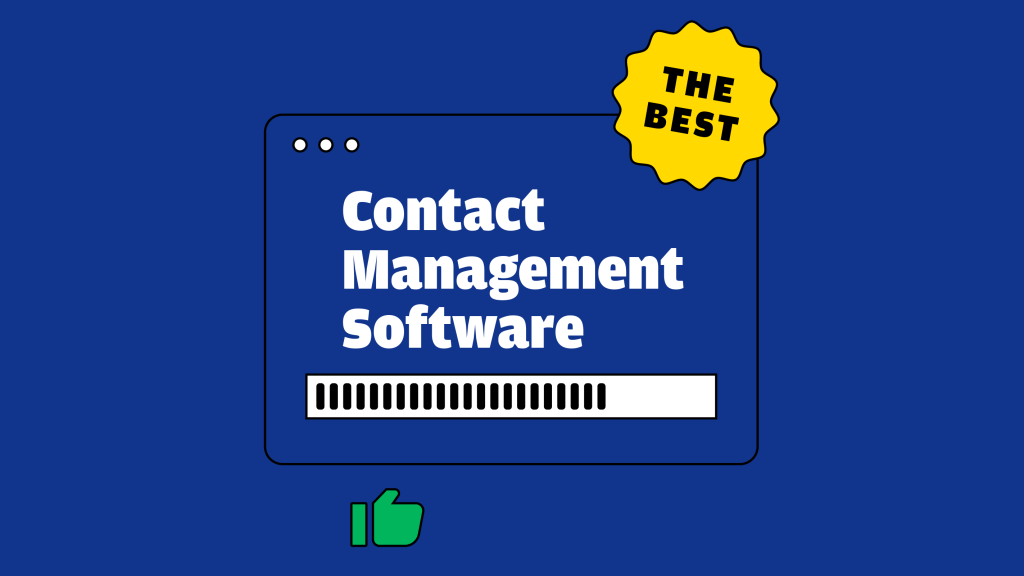In today’s competitive business landscape, effective lead management is crucial for success. This article provides an in-depth exploration of lead management strategies and their role in converting leads into loyal customers.
Brief Overview of Lead Management
Lead management encompasses the process of capturing, qualifying, nurturing, and tracking leads throughout their journey from initial contact to conversion. It involves a systematic approach to managing prospects and guiding them through the sales funnel.
Importance of Effectively Managing Leads for Conversion
Efficient lead management directly impacts a company’s bottom line by maximizing conversion rates and revenue generation. By effectively managing leads, businesses can:
- Identify and prioritize high-quality leads for targeted marketing efforts.
- Nurture relationships with leads through personalized communication, increasing engagement and trust.
- Track lead interactions and behaviors to understand their needs and preferences better.
- Streamline the sales process and improve overall efficiency, reducing the time and resources required to convert leads into customers.
In essence, effective lead management is the cornerstone of a successful sales and marketing strategy, driving sustainable growth and profitability for businesses of all sizes.

Understanding Leads
To effectively manage leads, it’s essential first to understand what they are, the various types they come in, and where they originate from.
Definition of Leads
Potential customers who express interest in your offerings through contact details or brand interactions are leads. These individuals or entities hold promise as future paying clients, showcasing intent to engage with your business contracts and e-signatures.
Different Types of Leads
- Cold Leads: Cold leads are prospects who have shown minimal or no interest in your offerings yet. They may have been acquired through purchased lists or general marketing efforts but haven’t engaged with your brand.
- Warm Leads: Warm leads are prospects who have shown some interest in your products or services but haven’t yet reached the stage of active consideration. They may have signed up for a newsletter, attended a webinar, or interacted with your content on social media.
- Hot Leads: Hot leads are prospects who are highly engaged and actively considering making a purchase. They may have requested a demo, filled out a contact form, or initiated direct communication with your sales team.
Sources of Leads
Website: Leads can originate from various pages on your website, including landing pages, contact forms, and blog posts. By optimizing your website for lead generation, you can attract potential customers and encourage them to take action.
Social Media: Social media platforms such as Facebook, Twitter, LinkedIn, and Instagram are valuable sources of leads. Engaging content, targeted ads, and direct messaging can all help attract and capture leads from social media channels.
Referrals: Referrals from satisfied customers, partners, or affiliates can be highly qualified leads. By incentivizing referrals and nurturing relationships with existing customers, you can tap into a valuable source of new business.
Networking Events: Attending industry conferences, trade shows, and networking events can provide opportunities to connect with potential leads face-to-face. Collecting business cards and following up with contacts afterward can turn these interactions into valuable leads.
Email Marketing: Email marketing campaigns, including newsletters, promotional offers, and drip campaigns, can generate leads by nurturing relationships with subscribers and encouraging them to take action.
The Lead Management Process
Managing leads effectively requires a systematic approach that involves various stages to ensure a smooth transition from initial contact to conversion.
Lead Capture: How to Attract Leads
1. Creating Compelling Content/Offers
Compelling content is the cornerstone of any successful lead-generation strategy. By creating valuable and relevant content, businesses can attract potential customers and compel them to take action. This content can take various forms, including:
- Blog Posts: Publishing informative blog posts that address common pain points and provide solutions can attract organic traffic and engage potential leads.
- Ebooks/Guides: Offering downloadable resources such as ebooks or guides can entice visitors to provide their contact information in exchange for valuable insights or information.
- Webinars/Online Events: Hosting webinars or online events on topics relevant to your target audience can not only attract leads but also position your business as an industry authority.
2. Implementing Lead Capture Forms
Lead capture forms are essential tools for collecting contact information from potential leads. When implementing lead capture forms, consider the following:
- Placement: Place lead capture forms strategically on your website, landing pages, and blog posts where they are easily accessible to visitors.
- Optimization: Keep lead capture forms concise and only request essential information to minimize friction. Experiment with different form designs and layouts to optimize conversion rates.
- Incentives: Offer incentives such as discounts, free trials, or exclusive content to encourage visitors to fill out lead capture forms.
Lead Qualification: Identifying Quality Leads
Once leads are captured, it’s crucial to prioritize and identify the most promising prospects for further engagement. This process, known as lead qualification, involves assessing leads based on predefined criteria to determine their likelihood of converting into customers.
1. Establishing Criteria for Lead Qualification
To effectively qualify leads, businesses must establish clear criteria based on demographic, firmographic, and behavioral factors. Common criteria for lead qualification include:
- Demographic Information: Age, location, industry, company size, job title, etc.
- Firmographic Information: Annual revenue, number of employees, industry sector, etc.
- Behavioral Indicators: Engagement with content, frequency of visits, interactions with marketing campaigns, etc.
2. Using Lead Scoring Techniques
Lead scoring is a method used to assign a numerical value to leads based on their fit and engagement level. By scoring leads, businesses can prioritize follow-up efforts and allocate resources more effectively. Key components of lead scoring include:
- Fit Score: Assessing how well a lead matches the ideal customer profile based on demographic and firmographic criteria.
- Engagement Score: Evaluating the level of interaction and engagement demonstrated by the lead, such as website visits, email opens, and downloads.
- Behavioral Score: Analyzing specific actions taken by the lead, such as requesting a demo, attending a webinar, or viewing pricing information.
Lead Nurturing: Building Relationships with Leads
Lead nurturing is the process of developing meaningful relationships with leads to keep them engaged and move them closer to making a purchase. Here are two effective strategies for lead nurturing:
1. Email Marketing Campaigns
Email marketing remains one of the most powerful tools for lead nurturing. By delivering targeted and personalized content directly to a lead’s inbox, businesses can nurture relationships and guide leads through the sales funnel. Key components of successful email marketing campaigns include:
- Segmentation: Segmenting leads based on demographics, interests, and behaviors allows businesses to deliver highly relevant content that resonates with recipients.
- Personalization: Personalizing email content with the lead’s name, relevant information, and tailored messaging enhances engagement and fosters a sense of connection.
- Automation: Leveraging email marketing automation tools enable businesses to send timely and relevant emails based on predefined triggers and actions taken by leads.
2. Personalized Follow-Up Strategies
Beyond email marketing, personalized follow-up strategies play a crucial role in nurturing leads and building trust. This can include:
- One-on-One Outreach: Sending personalized messages or making phone calls to leads to address their specific needs and concerns demonstrates a genuine interest in their success.
- Customized Content: Providing leads with relevant content and resources tailored to their interests and stage in the buying process can further nurture relationships and drive engagement.
- Social Media Engagement: Engaging with leads on social media platforms by liking, commenting, and sharing their content helps to keep the lines of communication open and build rapport.
Lead Tracking: Monitoring Lead Behavior and Interactions
Tracking and analyzing lead behavior and interactions is essential for understanding their needs and preferences and guiding them through the sales funnel effectively. Here are two key strategies for lead tracking:
1. Using CRM Software
Customer Relationship Management (CRM) software allows businesses to centralize lead data, track interactions, and manage relationships more efficiently. Key features of CRM software include:
- Lead Management: Capture and store lead information, track communication history, and assign tasks to team members for follow-up.
- Pipeline Management: Visualize the sales pipeline, track leads through each stage of the buying process, and prioritize activities to maximize conversion rates.
- Reporting and Analytics: Generate reports and analyze data to gain insights into lead behavior, campaign performance, and sales trends.
2. Analyzing Data to Identify Patterns and Trends
Analyzing data collected from various sources allows businesses to identify patterns and trends that can inform their lead management strategies. Key data points to analyze include:
- Website Analytics: Track website traffic, user engagement, and conversion rates to identify which marketing channels and content resonate most with leads.
- Email Metrics: Monitor email open rates, click-through rates, and conversion rates to optimize email marketing campaigns and improve engagement.
- Social Media Insights: Analyze social media engagement metrics such as likes, shares, and comments to understand lead preferences and interests.
Strategies for Effective Lead Management
Effective lead management requires the use of strategic tools and tactics to streamline processes and enhance engagement with leads. Here are two key strategies:
Automation Tools and Technologies
Automation tools play a crucial role in simplifying lead management processes and increasing efficiency. Two essential automation technologies include:
1. Introduction to CRM Systems
Customer Relationship Management (CRM) systems are powerful tools for managing leads, customer interactions, and sales pipelines. Key features of CRM systems include:
- Lead Management: Capture and organize lead information, track communication history, and assign tasks for follow-up.
- Sales Pipeline Management: Visualize the sales pipeline, track leads through each stage of the buying process, and forecast sales revenue.
- Automated Workflows: Streamline repetitive tasks and processes, such as lead nurturing emails and follow-up reminders, to save time and improve productivity.
2. Marketing Automation Platforms
Marketing automation platforms enable businesses to automate marketing tasks and campaigns, freeing up time for strategic initiatives. Key capabilities of marketing automation platforms include:
- Email Marketing Automation: Schedule and send personalized emails based on predefined triggers and actions taken by leads, such as website visits or form submissions.
- Lead Scoring and Segmentation: Automatically score leads based on their engagement level and segment them into relevant groups for targeted marketing campaigns.
- Multi-channel Campaign Management: Coordinate marketing efforts across various channels, including email, social media, and advertising, to deliver consistent messaging and maximize reach.
Personalization Tactics
Personalization is essential for engaging leads and building meaningful relationships. Here are two effective personalization tactics:
1. Tailoring Content Based on Lead Preferences
Understanding lead preferences and interests allows businesses to deliver targeted content that resonates with their audience. Key strategies for tailoring content include:
- Segmentation: Segment leads based on demographic, firmographic, and behavioral data to deliver personalized content tailored to their specific needs and interests.
- Content Mapping: Map content to each stage of the buyer’s journey to provide leads with relevant information and guidance as they progress through the sales funnel.
2. Implementing Dynamic Content Strategies
Dynamic content adapts to the preferences and behavior of individual leads, enhancing engagement and driving conversions. Key dynamic content strategies include:
- Dynamic Email Content: Personalize email content based on the recipient’s demographics, behavior, and preferences to increase open and click-through rates.
- Website Personalization: Customize website content, such as product recommendations and messaging, based on the visitor’s past interactions and interests to improve user experience and drive conversions.
Strategies for Effective Lead Management
To maximize the conversion of leads into customers, businesses must implement strategic approaches that integrate marketing and sales efforts while continuously optimizing their lead management processes.
Integration with Sales Efforts
Seamless integration between marketing and sales teams is crucial for effective lead management. Here are two strategies to achieve this integration:
1. Aligning Marketing and Sales Teams
Aligning marketing and sales teams ensures that both departments work towards common goals and objectives. Key steps to achieve alignment include:
- Regular Communication: Foster open communication and collaboration between marketing and sales teams to share insights, feedback, and updates on lead status and performance.
- Shared Goals and Metrics: Define shared goals and KPIs that align with both marketing and sales objectives, such as lead quality, conversion rates, and revenue targets.
- Joint Planning and Strategy: Collaborate on lead generation tactics, content creation, and campaign planning to ensure that marketing efforts support the sales process effectively.
2. Implementing Lead Handoff Processes
Establishing a clear and efficient lead handoff process ensures that leads transition smoothly from marketing to sales teams. Key components of a lead handoff process include:
- Lead Qualification Criteria: Define specific criteria for lead qualification to ensure that only high-quality leads are passed on to the sales team for further follow-up.
- Lead Routing Rules: Implement automated lead routing rules based on predefined criteria, such as geography, industry, or lead source, to ensure leads are assigned to the appropriate sales representatives.
- Feedback Loops: Establish feedback loops between marketing and sales teams to gather insights on lead quality, sales objections, and conversion rates, enabling continuous improvement of lead management processes.
Continuous Optimization
Continuous optimization is essential for refining lead management strategies and improving conversion rates over time. Here are two key optimization strategies:
1. A/B Testing Different Lead Management Strategies
A/B testing allows businesses to experiment with different lead management strategies and identify what resonates most with their audience. Key areas to A/B test include:
- Lead Capture Forms: Test different form designs, lengths, and form fields to optimize conversion rates and minimize friction.
- Email Marketing Campaigns: Experiment with subject lines, email content, send times, and call-to-action buttons to identify the most effective combinations for engaging leads.
2. Analyzing Results and Making Adjustments Accordingly
Analyzing data and performance metrics is crucial for identifying areas of improvement and making informed decisions. Key metrics to track and analyze include:
- Conversion Rates: Monitor conversion rates at each stage of the sales funnel to identify bottlenecks and areas for improvement.
- Lead Engagement: Track lead engagement metrics, such as email opens, click-through rates, and website interactions, to gauge interest and responsiveness.
- Sales Performance: Analyze sales data, such as win rates, average deal size, and sales cycle length, to understand the effectiveness of lead management efforts and adjust strategies accordingly.

Conclusion
Effective lead management is essential for maximizing conversion rates and driving revenue growth. By integrating marketing and sales efforts, implementing efficient lead handoff processes, and continuously optimizing lead management strategies, businesses can successfully convert leads into loyal customers and achieve long-term success.











